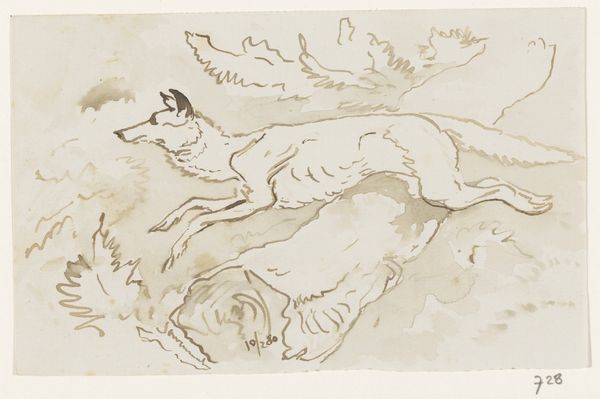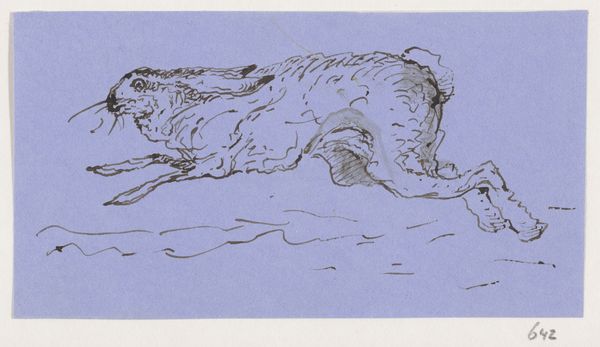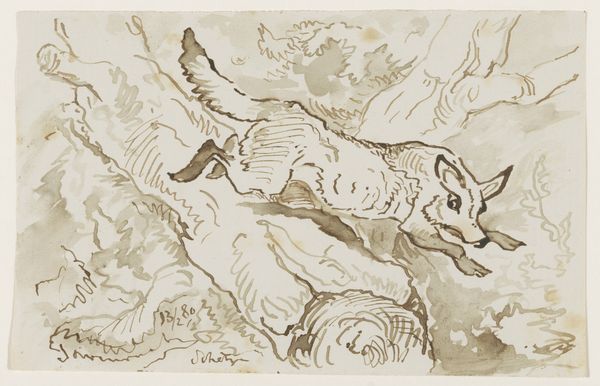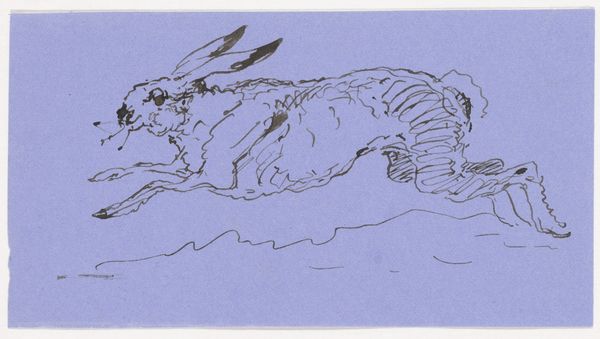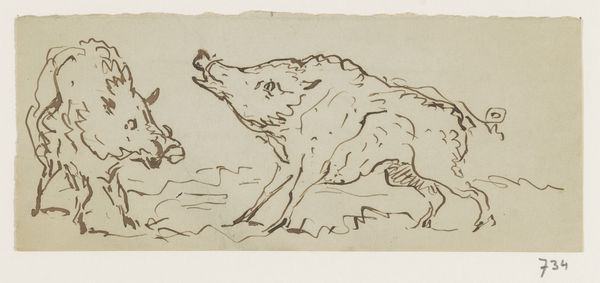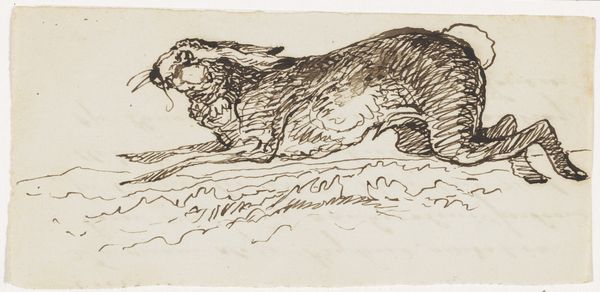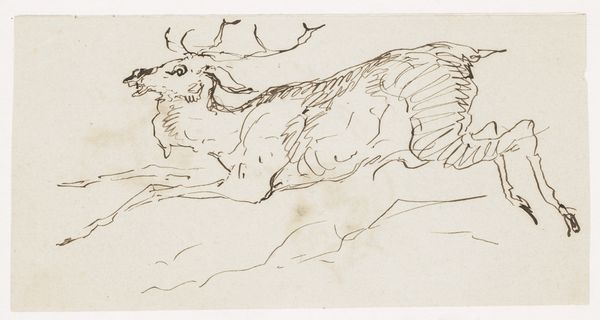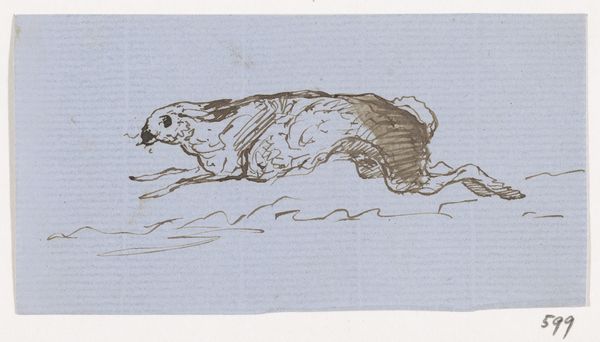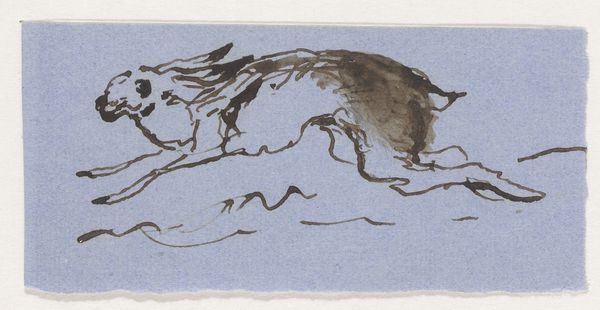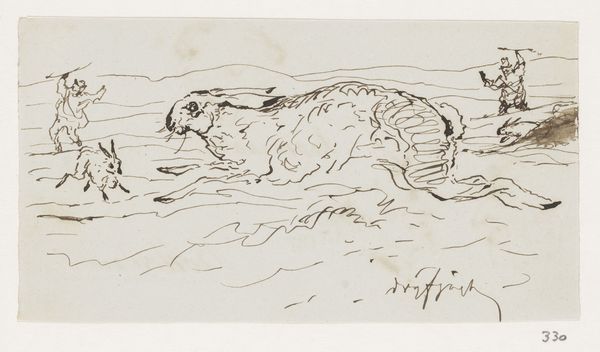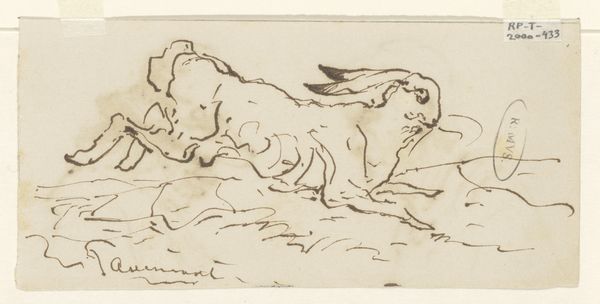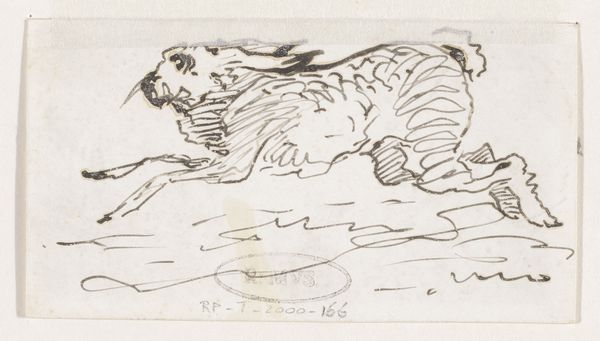
drawing, paper, ink
#
drawing
#
animal
#
figuration
#
paper
#
ink
#
line
#
genre-painting
#
realism
Dimensions: height 79 mm, width 142 mm
Copyright: Rijks Museum: Open Domain
Editor: Here we have Johannes Tavenraat’s “Haas,” created sometime between 1840 and 1880. It's an ink drawing on paper of a running hare. I’m immediately struck by its dynamism – the hare is captured mid-leap, full of energy. What can you tell me about it? Curator: This drawing offers us a fascinating glimpse into 19th-century Dutch art and its relationship to both the natural world and the socio-political landscape. The Rijksmuseum acquiring such a work reflects changing perceptions of genre painting during this period. Why do you think Tavenraat chose such a mundane subject matter? Editor: Perhaps there was an increasing interest in Realism, capturing everyday life as it is? Curator: Precisely! Realism gained momentum as a response to the more idealized and romanticized styles that preceded it. But let’s consider the cultural context: genre scenes, especially those depicting animals, were becoming increasingly popular, signifying a burgeoning middle class with leisure time and interests outside purely religious or historical narratives. Consider, too, the rise of natural history as a field. What effect did these burgeoning social dynamics have on the perception of animal subjects within artistic production? Editor: So, instead of grand historical paintings, art began reflecting everyday life, aligning with a changing society? Did the public acceptance change because of this? Curator: Exactly. The rising middle class was the art market of this period. Tavenraat and other artists like him were directly influenced by their values and perspectives. I believe it's very probable they wanted representations of the world that were familiar and relatable, ones that echoed their everyday experiences and concerns. Editor: This is truly enriching. Now I understand why this piece, seemingly simple, offers a valuable insight into the culture of the 19th century. Curator: Indeed, this piece challenges the perception of art history, prompting one to study and question seemingly insignificant artifacts in an all-encompassing sense.
Comments
No comments
Be the first to comment and join the conversation on the ultimate creative platform.
